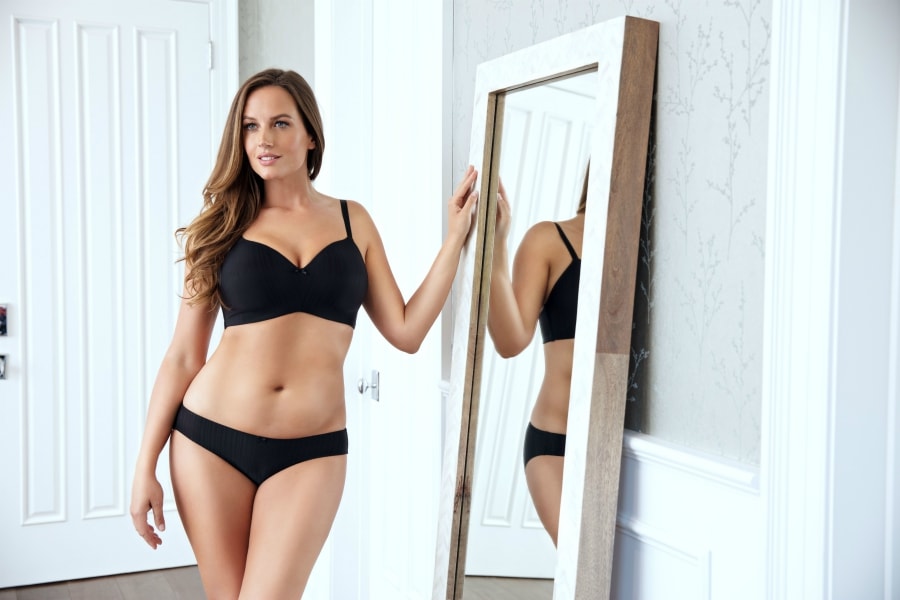Quad boob, uni-boob, or simply spillage — regardless of what you call it, it can be a pretty unsightly problem. We all know that a bra is supposed to contain our breasts, so when they don’t seem to be capable of that, you know you’ve got a fit issue on your hands.
Very often, breast tissue spills out of the top of the cups. And it goes without saying that it’s uncomfortable as well as unflattering. So what does this mean? Why does it happen? And how can you fix it? Follow the steps in this guide to find out.
Make some adjustments
Sometimes all it takes is a few tweaks to solve your breast spillage woes. The band on the bra lends a majority of the support, and if it’s not tight enough, it can ride up in the back, which then leads the cups to droop downward (thus causing your boobs to spill out). As such, you’ll definitely want to make sure the band is snug enough. Take a peek at the back to check whether it lies in a straight line parallel to the floor.
Next, be sure to adjust the straps to the point where they aren’t likely to fall off your shoulders but also aren’t digging into them, either.
Don’t forget to scoop your breasts into the cups to check whether they’re fully encompassed by the cups, with the underwire (if there is any) comfortably encircling them.
You may be surprised at how these simple fit adjustments can prevent the dreaded quad boob. However, if you’re still seeing some spillage…
Related: This Is Why Your Band Rides Up Your Back
Get fitted
The best thing to do in this situation is to refer to a professional. Because very often, if you’re spilling out of the top of the cups, you’re wearing the wrong bra size. Specifically, you are probably wearing a cup size that’s too small.
Of course, you could try simply going up a cup size. However, it can be helpful to get fitted at your local lingerie boutique or department store to ensure that you have a flawless fit all around with no more spillage. After all, a pro can not only properly measure you, but also suggest styles that work best for your particular breast shape.
Switch styles
Speaking of bra styles, if adjusting the bra and changing your cup size doesn’t solve the spillage issue, then you may need to consider this aspect. Certain styles work better for every breast shape, and knowing yours can help you to seek out bras that don’t cause any pesky uni-boob. It’s worth noting that if you have a larger bust, a full cup bra will help you to avoid spillage but ensuring you have adequate coverage. This bra style offers more coverage than a demi cup bra or balconette bra.
Spilling out of the top of your bra cups? Taking the aforementioned steps should help you to figure out the culprit and quickly resolve it. After all, you deserve a bra that makes you feel comfy and confident — not one that forces you to constantly keep adjusting your breasts, or cause any insecurities about your appearance.
Related: The Girl’s Guide To Bra Styles
We Highly Recommend
Whether you’re shopping for new everyday bras or lingerie for a special occasion, it’s always a good idea to seek out a second opinion. We know how hard it is to find bras that fit well and feel good, especially when you’re doing it on your own. If you’ve ever felt unsure about your bra size or you just don’t know where to go to find good bras, it’s time to let a bra fitter help.
Many specialty lingerie boutiques offer bra fittings. Their expert bra fitters will take the pain and frustration out of bra shopping and do all the work for you. Even better, their product knowledge can save you time and money. Plus, they know where all of the best bras are hiding.
If you’ve struggled with finding bras in the right size, it’s time to make a change. Visit our specialty store locator to find a store near you and schedule an appointment.
Happy bra shopping!












